[最も好ましい] expressed emotion psychology a level 124110-Expressed emotion psychology a level
Cole & Kazarian, 19) is a 60item questionnaire, specifically designed to measure the perceived EE of the most influential person in the participant's life during the last three months The four subscales of the LEE are Intrusiveness, Negative Attitude, Tolerance/expectation and Emotional ResponseMeasuring Expressed Emotion An Evaluation of the Shortcuts The Harvard community has made this article openly available Please share how this access benefits you Your story matters Citation Hooley, Jill M, and Holly A Parker 06 Measuring expressed emotion An evaluation of the shortcuts Journal of Family Psychology , no 3Depression is a category of mood disorders, which is often divided into two main types unipolar and bipolar depression, otherwise known as manicdepression To be given a diagnosis of depression, sufferers are required to display at least five

Pdf The Spanish Validation Of Level Of Expressed Emotion Scale For Relatives Of People With Eating Disorders
Expressed emotion psychology a level
Expressed emotion psychology a level-Expressed Emotion and Schizophrenia, (Vaughn and Leff, 1976) Evidence for particular differences in family relationships as a cause of schizophrenia is fairly weak However there is support for idea that family relationships and interpersonal communication may well be associated with maintenance of condition and rate of relapse,Broun et al explored the idea of expressed emotion in their 9 month follow up study of previous Sz sufferers and found that in families with a high expressed emotion there was a 58% relapse compared to a 10% relapse in low expressed emotion families, suggesting a clear link between high expressed emotion levels and relapse
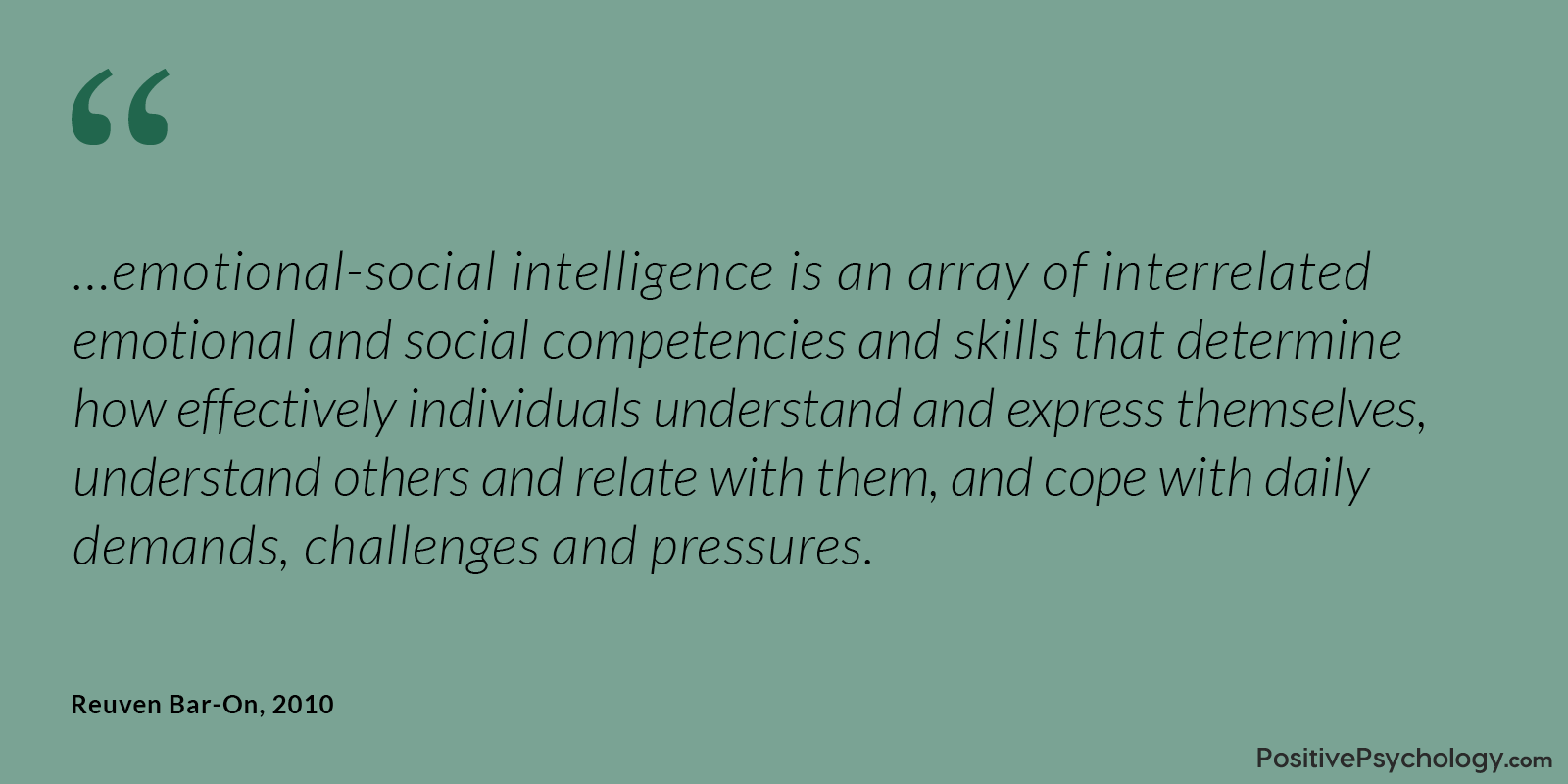



7 Emotional Intelligence Quotes And Do They Ring True
Does the level of expressed emotion (LEE) questionnaire have the same factor structure for adolescents as it has for adults? · Expressed emotions 1 Expressed Emotions Niharika Thakkar MA, NET, MBPsS, Clinical Psychology 2 What are Expressed Emotions??Introduction to Psychology Module 12 Emotion and Motivation Search for Expressing and Recognizing Emotion Learning Objectives Describe the role that limbic structures play in emotional processing;
· Evidencebased information on expressed emotion from hundreds of trustworthy sources for health and social care Search results Jump to search results Filter Toggle filter panel Evidence type Add filter for Guidance and Policy (168) Add filter for Guidance (132) Add filter for Policy and Strategy (41) Add filter for Quality Indicators (1) Add filter for Safety Alerts (1) Add · Expressed Emotion – Expressed emotion, or EE, is where there is a high level of emotion in a family For example, a family who constantly argue and fight would have high EE Although expressed emotion rarely results in the onset of schizophrenia many psychologists, for example Kalafi and Torabi, agree that high EE can result in the relapse back into schizophrenia ofLevel of Expressed Emotion Scale (LEE) The Level of Expressed Emotion Scale 23 is a 60item, self report measure that assesses the emotional environment in the patient's most important relationships Items in the LEE Scale are based on the EE construct, and the four subscales are intrusiveness, emotional response, attitude toward Illness, and tolerance and expectations
· The Level of Expressed Emotion Scale (LEE;All participants were requested to fill out the Sociodemographic Data Form, Shortened Level of Expressed Emotion Scale, Rosenberg SelfEsteem Scale, Strength and Difficulties QuestionnaireAdolescent Form Results In our study, obese adolescents showed a significant difference in perceived EE (p · EXPRESSED EMOTION (EE) Negative emotions that are expressed by family members to the person with a mental or emotional disorder EXPRESSED EMOTION (EE) "Joe's family used expressed emotion towards his mental illness" Cite this page N, Pam MS, "EXPRESSED EMOTION (EE)," in PsychologyDictionaryorg, April 7, 13, https



11 1 The Experience Of Emotion Introduction To Psychology 1st Canadian Edition




Emotion Wheel How To Use It For Emotional Literacy
· The term 'expressed emotion' encompasses particular attitudes, emotions and behaviours expressed by family carers towards the person (s) to whom they provide care 6 Key components include emotional overinvolvement (EOI), critical comments (CC), and hostility 6Emotion Emotion Quiz SparkNotes 1 Which one of the following is not one of the six universally recognizable, basic emotions described by Ekman and his colleagues? · High expressed emotion (EE) in a patient's family is a known risk factor of relapse in schizophrenia The three components of high EE criticism, hostility and emotional overinvolvement were developed through a datadriven approach and a focus on overt abrasive behaviours The influence of covert abrasive behaviours has not been explored




Psychological Therapies For Schizophrenia Ppt Download




Expression Of Emotion As Part Of The Work Role Academy Of Management Review
The Level of Expressed Emotion (LEE) scale was developed to provide an index of the perceived emotional climate in a person's influential relationships Unlike existing measures, the scale was constructed on the basis of a conceptual framework described by expressed emotion theoristsLeDoux 1996, 02) A fear stimulus is processed by the brain through one of two paths from the thalamus (where it isInformation and translations of expressed emotion in the most comprehensive dictionary definitions resource on the web
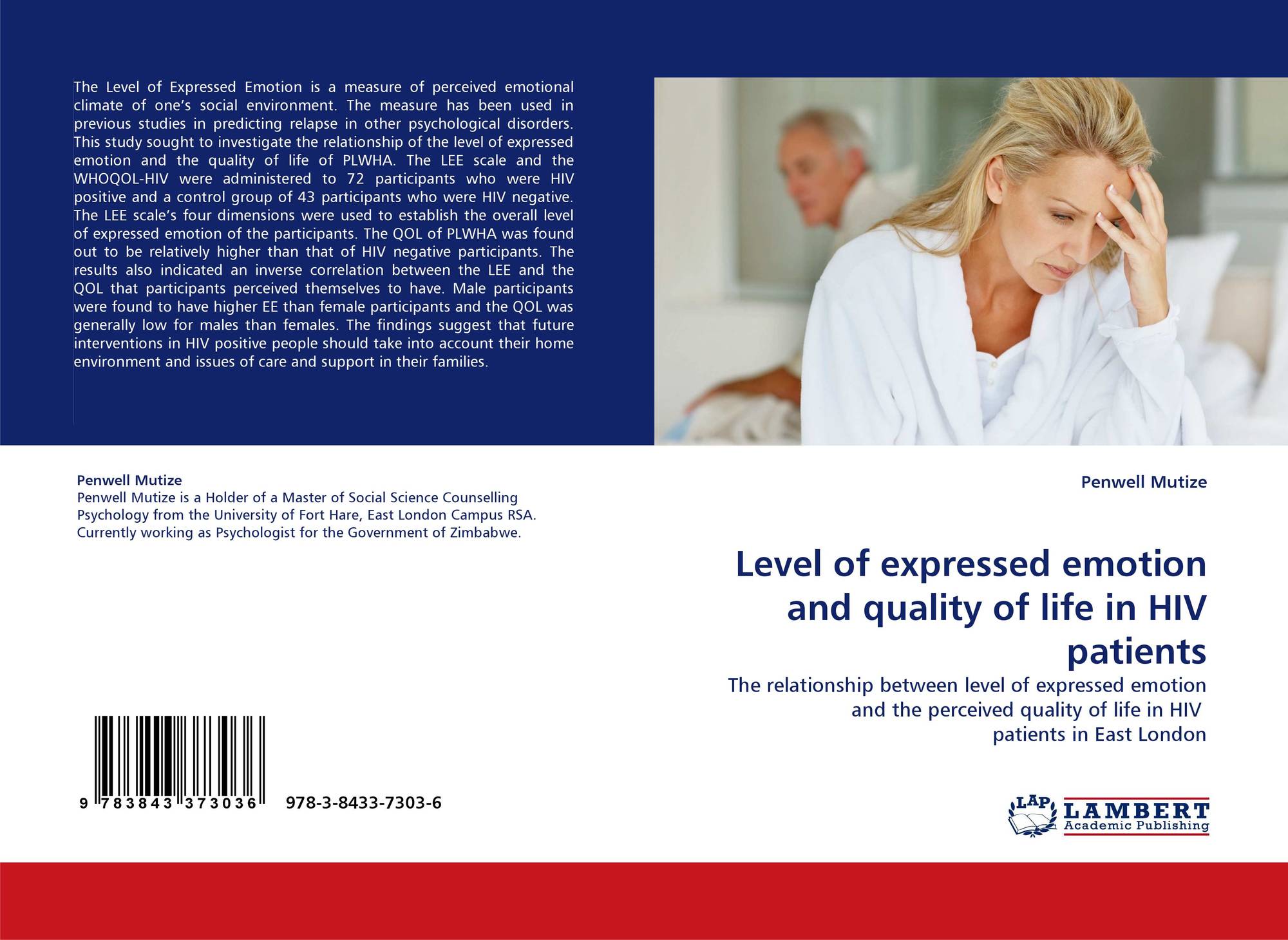



Level Of Expressed Emotion And Quality Of Life In Hiv Patients 978 3 8433 7303 6 By Penwell Mutize




Self Expression Collage And Journaling Aviary Recovery Center
The Level of Expressed Emotion (LEE) scale was developed to provide an index of the perceived emotional climate in a person's influential relationships Unlike existing measures, the scale was constructed on the basis of a conceptual framework described by expressed emotion theoristsBACKGROUND The Level of Expressed Emotion scale (LEE) is a questionnaire designed to measure the perception of expressed emotion, an important predictor of the course of several psychiatric disorders METHOD In this study, the scale's predictive and construct validity were examined in a sample of 26 clinically depressed outpatients and their partners, and in a sampleMen are told that they should never show their emotions, they are socialized to be aggressive, and they are taught to derogate anything female This manifests itself as a high level of competitiveness, a disability to be open and vulnerable, and a lack of competence in interpersonal relationships (Kimmel, 1990) Culture AO1




Emotion Introduction To Psychology




Mapping The Emotional Face How Individual Face Parts Contribute To Successful Emotion Recognition
Factor Analysis of the Level of Expressed Emotion Scale, A Questionnaire Intended to Measure 'Perceived Expressed Emotion' Volume 160 Issue 3Level of expressed emotion scale This is a 60item, selfreport scale that measures the emotional environment in the patient's most important relationships It has 60 items that form the four subscales, namely Intrusiveness, Emotional Response, Attitude toward Illness, and Tolerance and Expectations Items are rated in a true–false format, and the scale produces a score for the levelLeDoux also views some emotions as requiring no cognition some emotions completely bypass contextual interpretation His research into the neuroscience of emotion has demonstrated the amygdala's primary role in fear (Cunha, Monfils, & LeDoux, 10;




Pdf An Overview Of Expressed Emotion
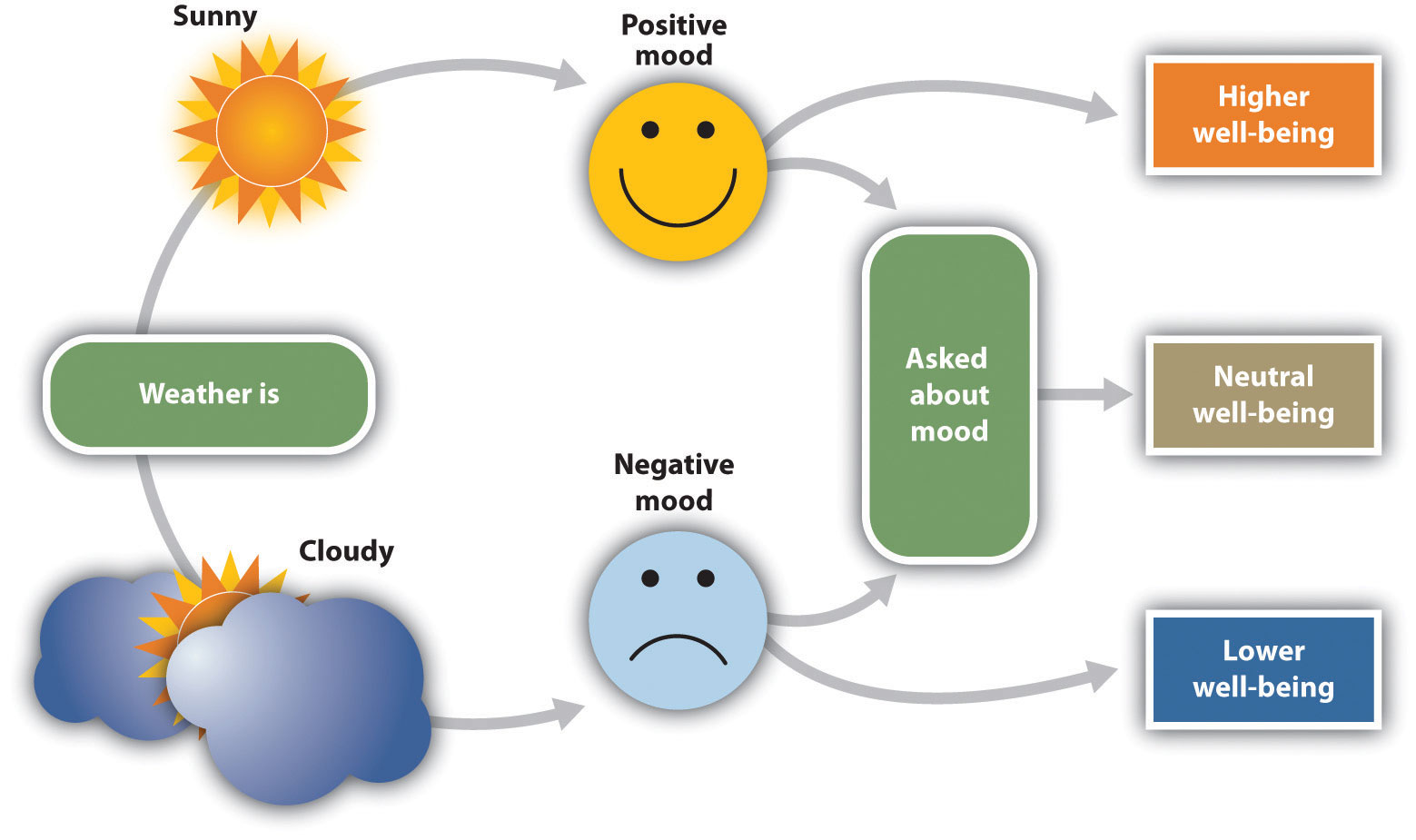



3 1 Moods And Emotions In Our Social Lives Principles Of Social Psychology
Research on Expressed Emotion (EE) developed out of studies of the impact of family members on patients with schizophrenia, and has provided us with a robust measure of relatives' emotional attitudes towards patients, which has now been applied in the study of numerous psychiatric and medical illnesses This review outlines the history of EE research in schizophrenia, and discussesClassify and explain how emotions are recognized and expressed; · Essential AQA ALevel Psychology Teaching Exam Technique for 12Mark Research Methods Questions 12 hours learning time ;




How Many Different Kinds Of Emotion Are There Frontiers For Young Minds




Full Schizophrenia Revision Resources Activities Revision Cards And Ppt Covering Whole Topic Aqa Psychology Teaching Resources
· Summarize the psychological theories of emotion Give examples of the ways that emotion is communicated The most fundamental emotions, known as the basic emotions, are those of anger, disgust, fear, happiness, sadness, and surprise · The construct of expressed emotion (EE), developed in the 1960s and 1970s in England by Brown et al 2 and Brown and Rutter, 3 is an important measure of the patient–relative (or caregiver) relationship It is represented by a series of specific emotions, attitudes, and behaviors expressed by caregivers toward the patient 4Five Minute Speech Sample Expressed Emotion (FMSSEE) was examined in families of youth with depressive disorders, nondepressed youth with attention deficit/hyperactivity disorder (ADHD), and community controls screened for the absence of depression and ADHD Consistent with the hypothesis that FMSSEE shows some specificity as a risk factor for depression, rates of critical
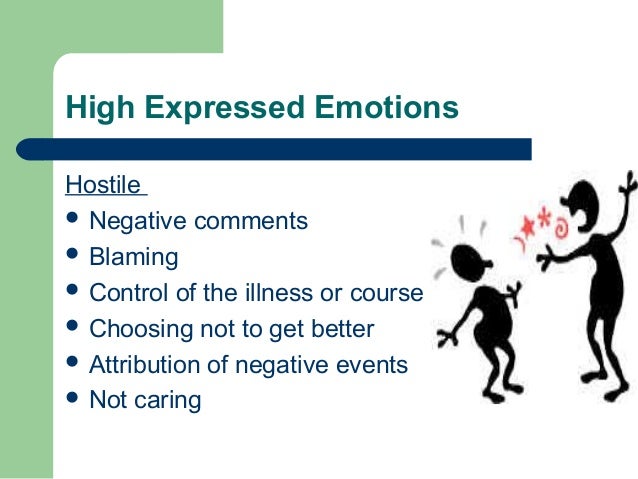



Expressed Emotions




Predictive Validity Of The Level Of Expressed Emotion Lee Scale Readmission Follow Up Data For 1 2 And 5 Year Periods John D Cole Shahe S Kazarian Download
The appropriateness of the Level of Expressed Emotion scale as a measure of perceived expressed emotion was examined in a sample of adolescents Participants were 239 male and 422 female adolescents with a mean age of 159 years (SD = 126) Principal component analysis and confirmatory factor analysis suggested a shortened thirty three item scale with three subscales,Expressed emotion is a huge factor during the recovery process of those diagnosed with psychological illnesses The three attitudes pertaining to expressed emotion are known as hostile, critical, and emotional overinvolvement These attitudes of the relatives determine the direction of the illness after treatmentExpressed emotion is a family communication style that involves criticism, hostility and emotional overinvolvement High levels of this may influence relapse rates, or the onset of schizophrenia in a vulnerable person




Text Based Emotion Detection Advances Challenges And Opportunities Acheampong Engineering Reports Wiley Online Library
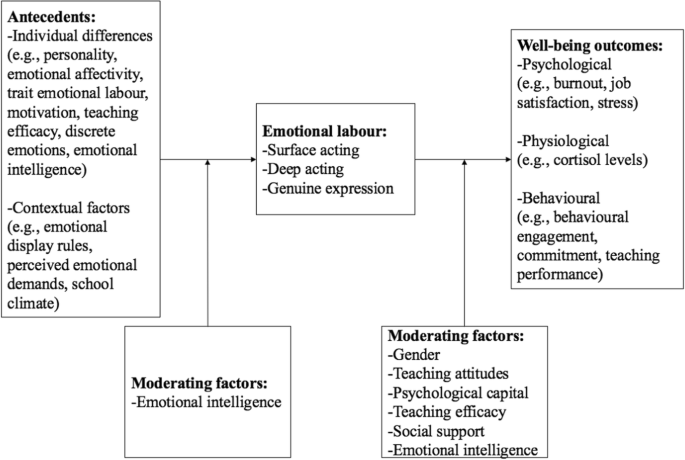



Antecedents And Consequences Of Teachers Emotional Labor A Systematic Review And Meta Analytic Investigation Springerlink
@article{Hale06DoesTL, title={Does the level of expressed emotion (LEE) questionnaire have the same factor structure for adolescents as it has for adults?}, author={W Hale and Q Raaijmakers and C Gerlsma and W Meeus}, journal={Social Psychiatry · Moreover we experience such reactions on a less intense level throughout daily lives, such as, the pleasure of seeing a friend or the sorrow of forgetting to return a borrowed pen to a friend All these feelings have one thing in common they all represent emotions The word emotion comes from the Latin word 'emover' meaning to 'move out' or to excite In common usage emotionSurprise Fear Disgust Anxiety 2 Polygraphs detect which of the following?




Emotion Classification Wikipedia
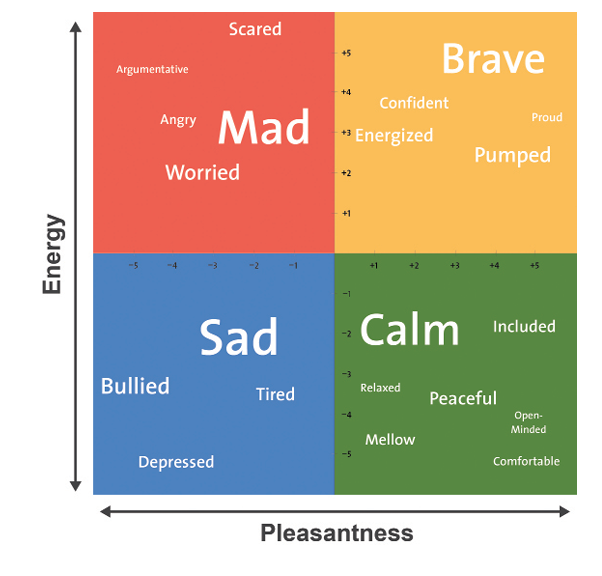



Teaching Emotional Intelligence In Early Childhood Naeyc
All teachers of AQA ALevel Psychology Full course details › Teaching Exam Technique for 12Mark Research Methods Questions Attachment Knowledge Book for AQA ALevel Psychology SKU · The Level of Expressed Emotion scale (LEE) is a questionnaire designed to measure the perception of expressed emotion, an important predictor ofArticle citations More>> Cole, JD and Kazarian, SS (19) The Level of Expressed Emotion Scale A New Measure of Expressed Emotion Journal of Clinical Psychology, 44,




Facial Expressions Of Emotion Are Not Culturally Universal Pnas




Emotion Introduction To Psychology
Outline Gottesmans' research (Hint Genetic Basis) He found that MZ twins have a 50% shared risk of Schizophrenia Whereas DZ twins have a % shared risk, and siblings have aQualitative measure of the 'amount' of emotion displayed Family setting Care takers Relatives How do relatives of a psychological patient express their attitude towards them while they are not present ???• Another family variable associated with schizophrenia is a negative emotional climate, or more generally a high degree of expressed emotion (EE) EE is a family communication style that involves criticism, hostility and emotional overinvolvement The researchers concluded that this is more important in maintaining schizophrenia than in causing it in the first place, (Brown et al



11 1 The Experience Of Emotion Introduction To Psychology 1st Canadian Edition




Manage Your Emotional Culture
10 videos, downloads and activities ;Definition of expressed emotion in the Definitionsnet dictionary Meaning of expressed emotion What does expressed emotion mean? · When the factor structure and psychometric qualities of the Level of Expressed Emotion scale, an instrument intended to assess patient's perceptions of expressed emotion, were evaluated, three moderately intercorrelated factors emerged, with good internal consistency;




A Psychologist Explains How To Get Better At Expressing Your Feelings The Atlantic
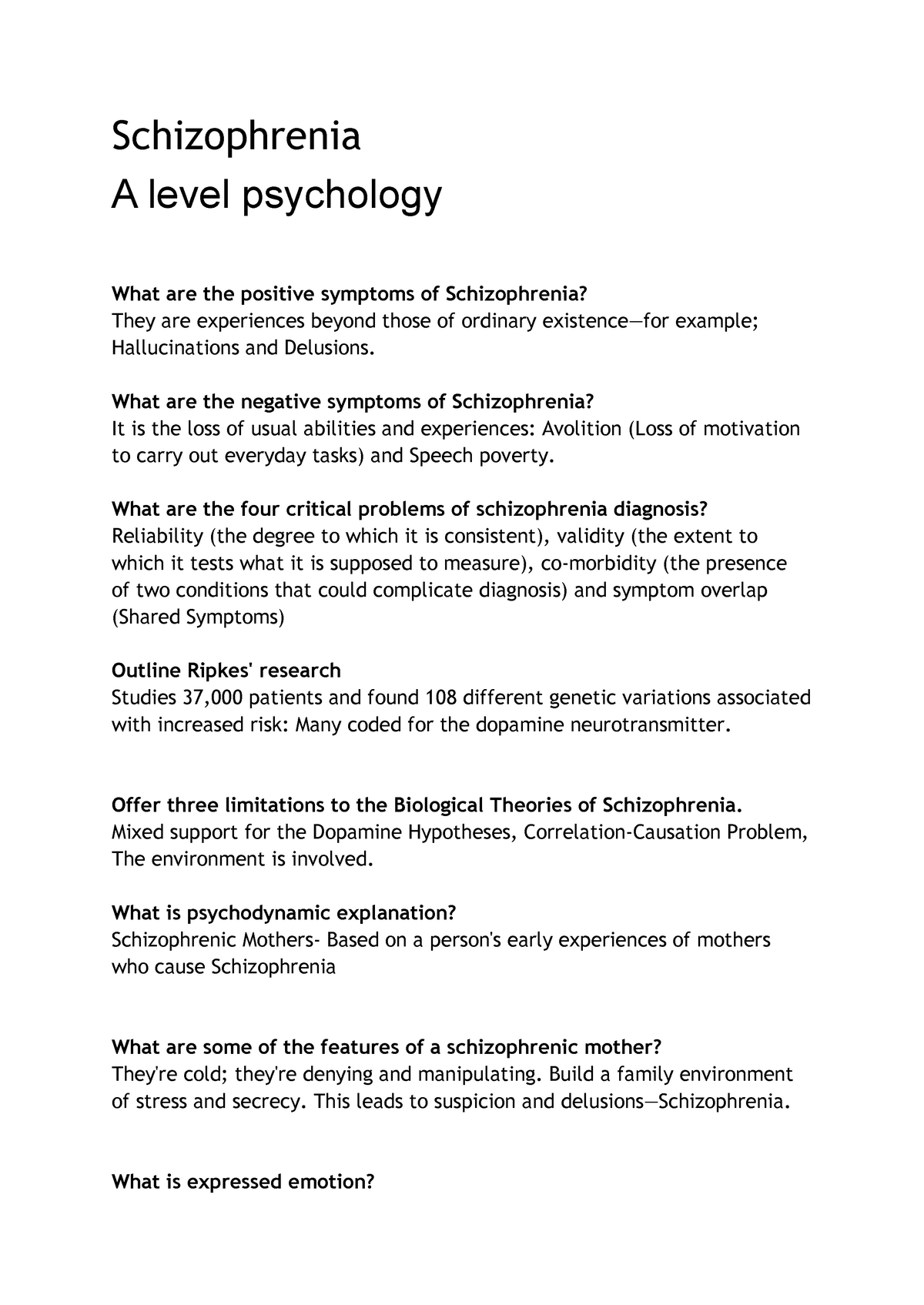



Schizophrenia Revision Notes Studocu
The Biology of Emotions Earlier, you learned about the limbic system, which is the area of the brain involved in emotionEmotion" (yelling, shouting, fighting, or critical or hostile comments) and stress that is in the living environment of the person with schizophrenia Research has demonstrated that individuals from families with high "expressed emotion" are 37 times more likely to relapse than in families from low expressed emotion familiesStudyWise ALevel Psychology Revision (8 and 16 marks) One psychological theory based around family dynamics focuses on "Expressed Emotion" (EE) EE is a family communication style that involves criticism, hostility and emotional over involvement High EE environments are strongly linked with relapse A similar family dynamic explanation is Bateson's double bind theory which




Pdf The Spanish Validation Of Level Of Expressed Emotion Scale For Relatives Of People With Eating Disorders



The Science Of Emotion Exploring The Basics Of Emotional Psychology Uwa Online
The expressed emotion (EE) is considered to be an adverse family environment, which includes the quality of interaction patterns and nature of family relationships among the family caregivers and patients of schizophrenia and other psychiatric disorders Influence of EE has been found to be one of t Expressed emotion in schizophrenia an overview Indian J Psychol Med 12These were lack of emotional support, intrusiveness/control, and irritabilityTheoretically, a high level of EE in the home can worsen the prognosis in patients with mental illness, (Brown et al, 1962, 1972) or act as a potential risk factor (JR Asarnow, M Tompson, S Woo, DP Cantwell (04) Is Expressed Emotion a Specific Risk Factor for Depression or a Non Specific Correlate of Psychopathology
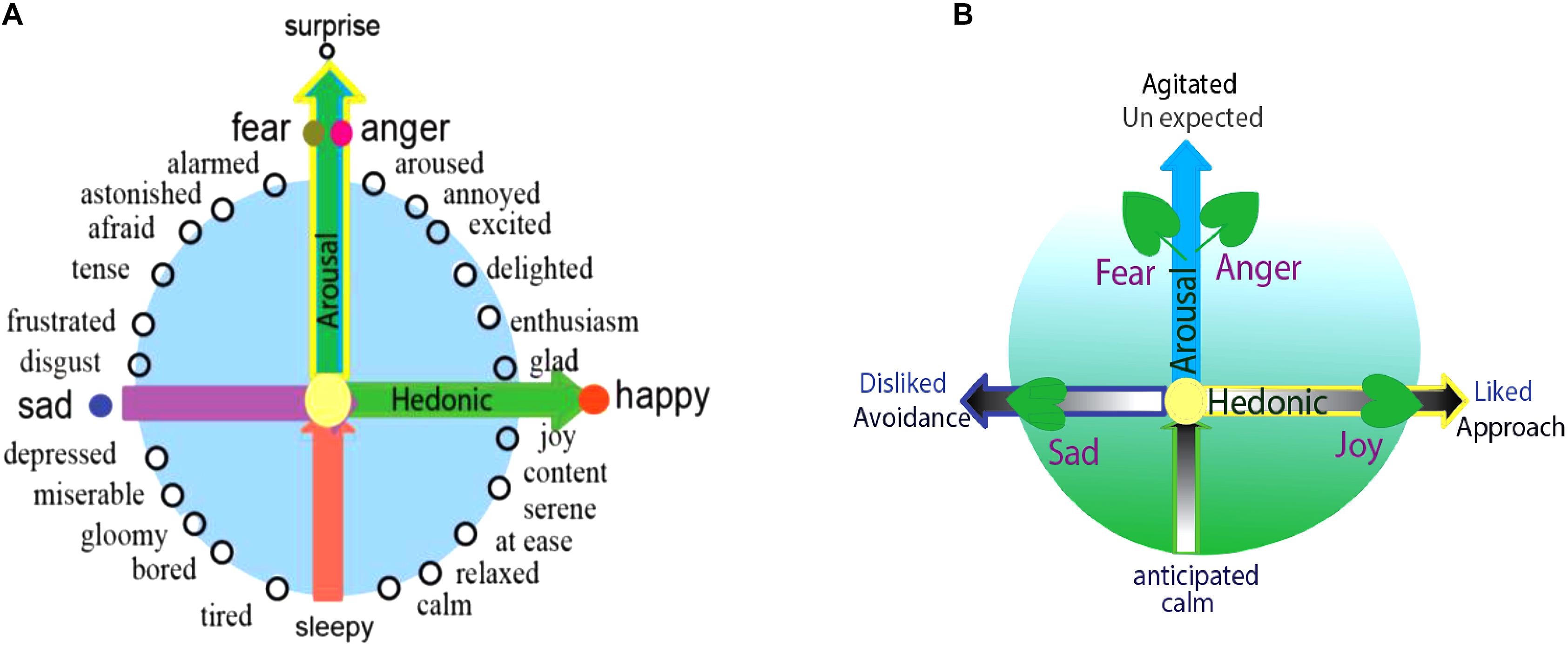



Frontiers A Model For Basic Emotions Using Observations Of Behavior In Drosophila Psychology




Abnormal Psychology In A Changing World Eighth Edition Jeffrey S Nevid Spencer A Rathus Beverly Greene Chapter 12 Schizophrenia And Other Psychotic Disorders Abnormal Psychology Family Communication Psychology



Testing The Psychometric Properties Of A Chinese Version Of The Level Of Expressed Emotion Scale Document Gale Academic Onefile
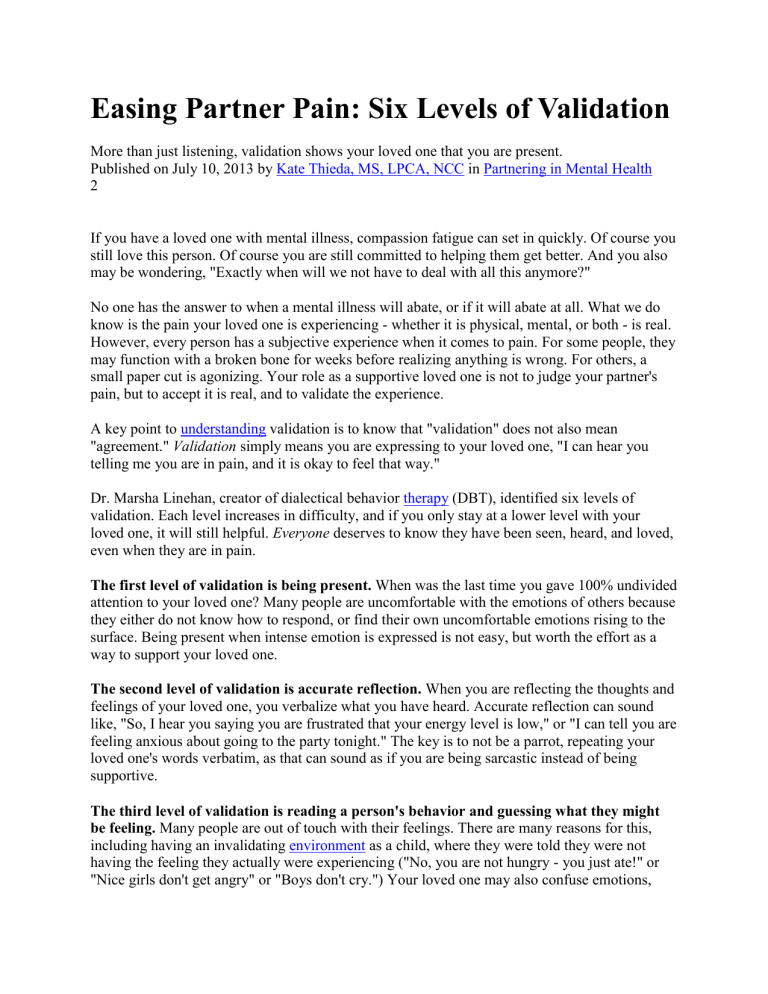



Six Levels Of Validation From Psychology Today




Physiological Feelings Sciencedirect




Kcm4issgegsqxm




Pdf Guilt Proneness And Expressed Emotion In Relatives Of Patients With Schizophrenia Or Related Psychoses
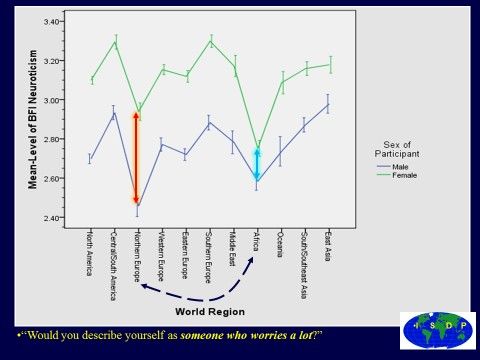



Are Women More Emotional Than Men Psychology Today



Path Models Of Vocal Emotion Communication




How Many Emotions Can Music Make You Feel




Expressed Emotion In Families Amazon Co Uk Leff J P Books




A Psychologist Explains How To Get Better At Expressing Your Feelings The Atlantic
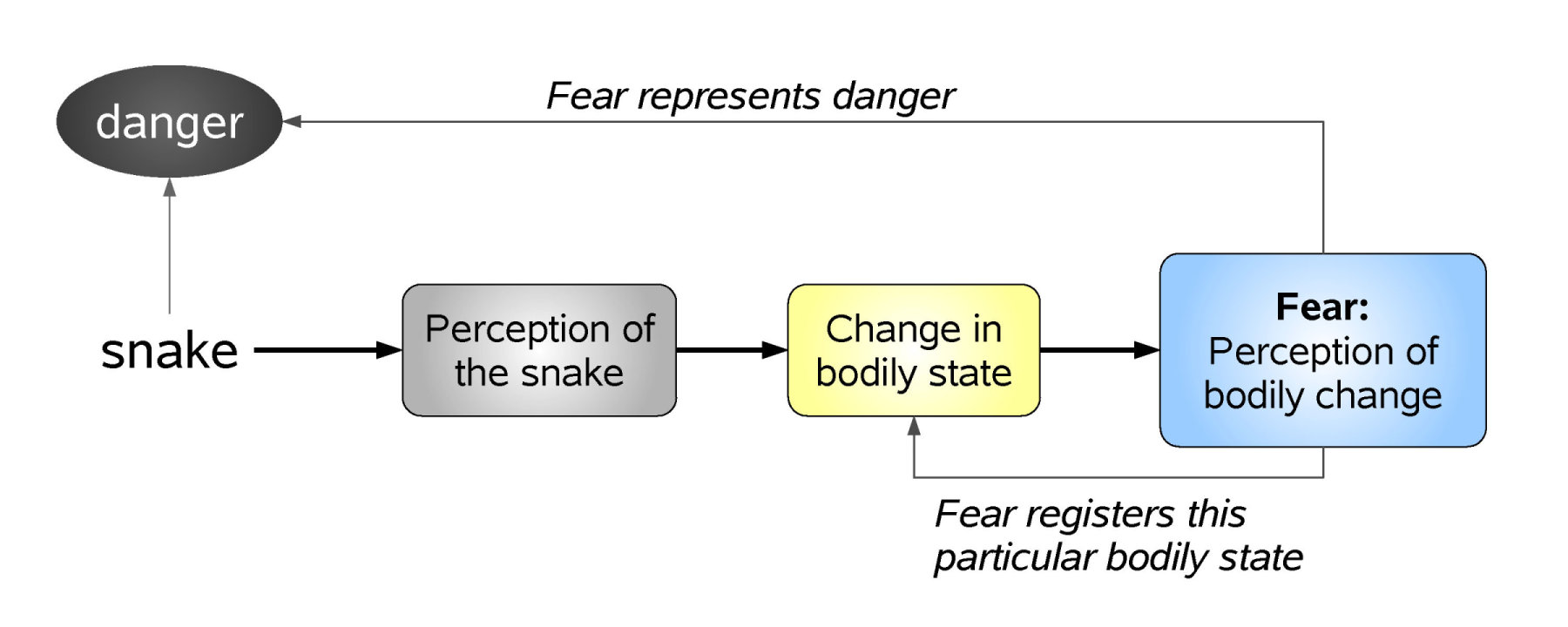



Emotion Theories Of Internet Encyclopedia Of Philosophy




Connecting Minds And Sharing Emotions Through Mimicry A Neurocognitive Model Of Emotional Contagion Sciencedirect




The History Of Emotions Blog Conversations About The History Of Feeling From Www Qmul Ac Uk Emotions




How Influences On Emotional Expression Impact Communication Video Lesson Transcript Study Com
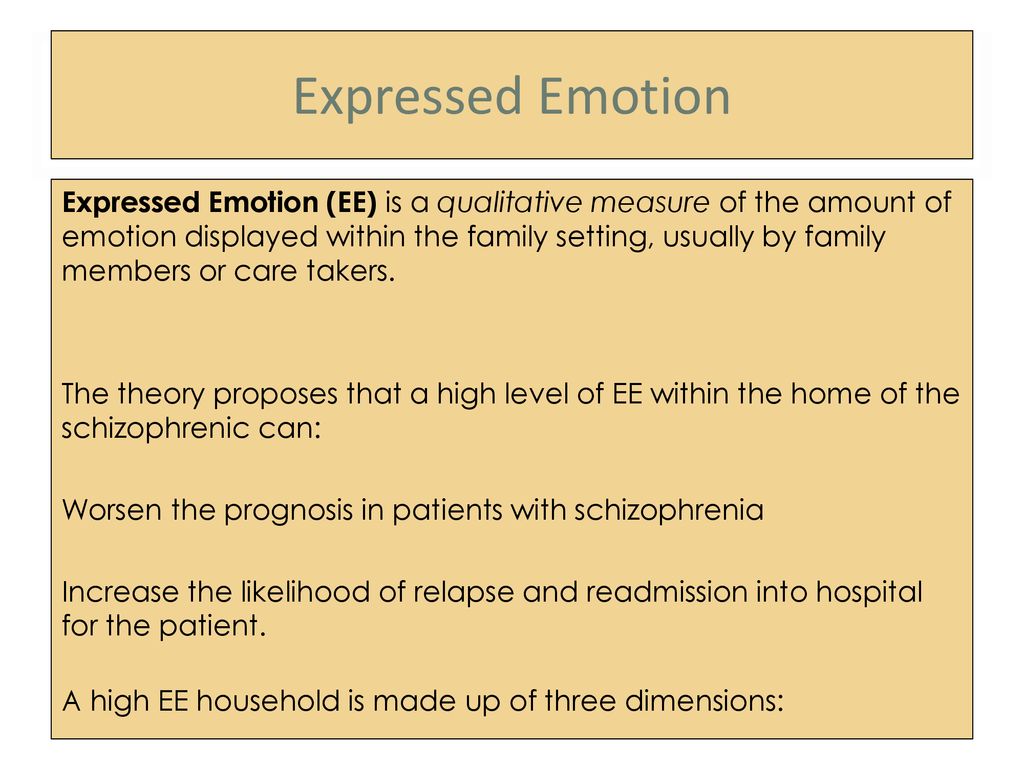



Psychological Explanation Ppt Download
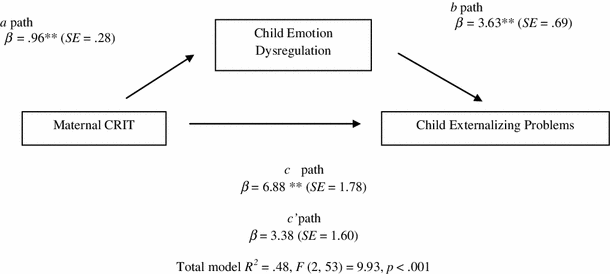



Maternal Expressed Emotion In Relation To Child Behavior Problems Differential And Mediating Effects Springerlink




Parental Expressed Emotion And Adolescent Self Injurious Thoughts And Behaviors Unc Psych Neuro Undergraduate Poster Session
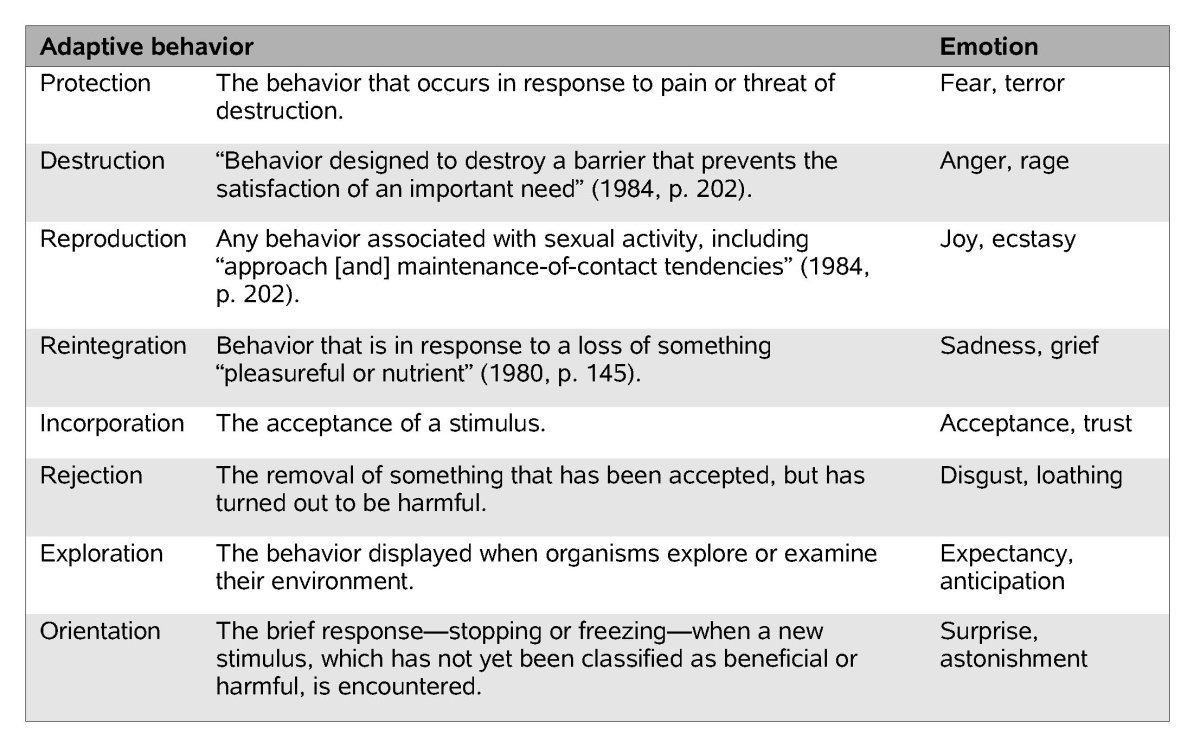



Emotion Theories Of Internet Encyclopedia Of Philosophy



Gender Differences In Emotional Response Inconsistency Between Experience And Expressivity
/what-are-emotions-2795178_color1-5b76d23ac9e77c0050245d75.png)



Emotions And Types Of Emotional Responses
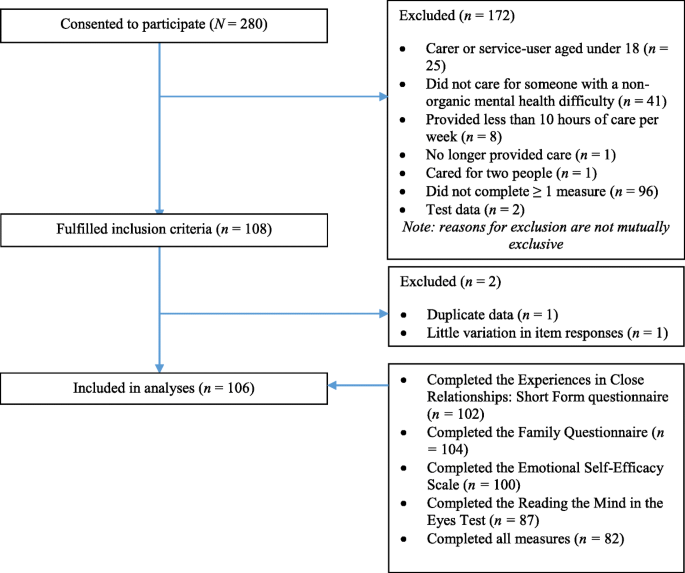



Attachment Mentalisation And Expressed Emotion In Carers Of People With Long Term Mental Health Difficulties Bmc Psychiatry Full Text




Emotion Wikipedia




Kcm4issgegsqxm




Can Parent Training For Parents With High Levels Of Expressed Emotion Have A Positive Effect On Their Child S Social Anxiety Improvement Topic Of Research Paper In Psychology Download Scholarly Article Pdf



Testing The Psychometric Properties Of A Chinese Version Of The Level Of Expressed Emotion Scale Document Gale Academic Onefile
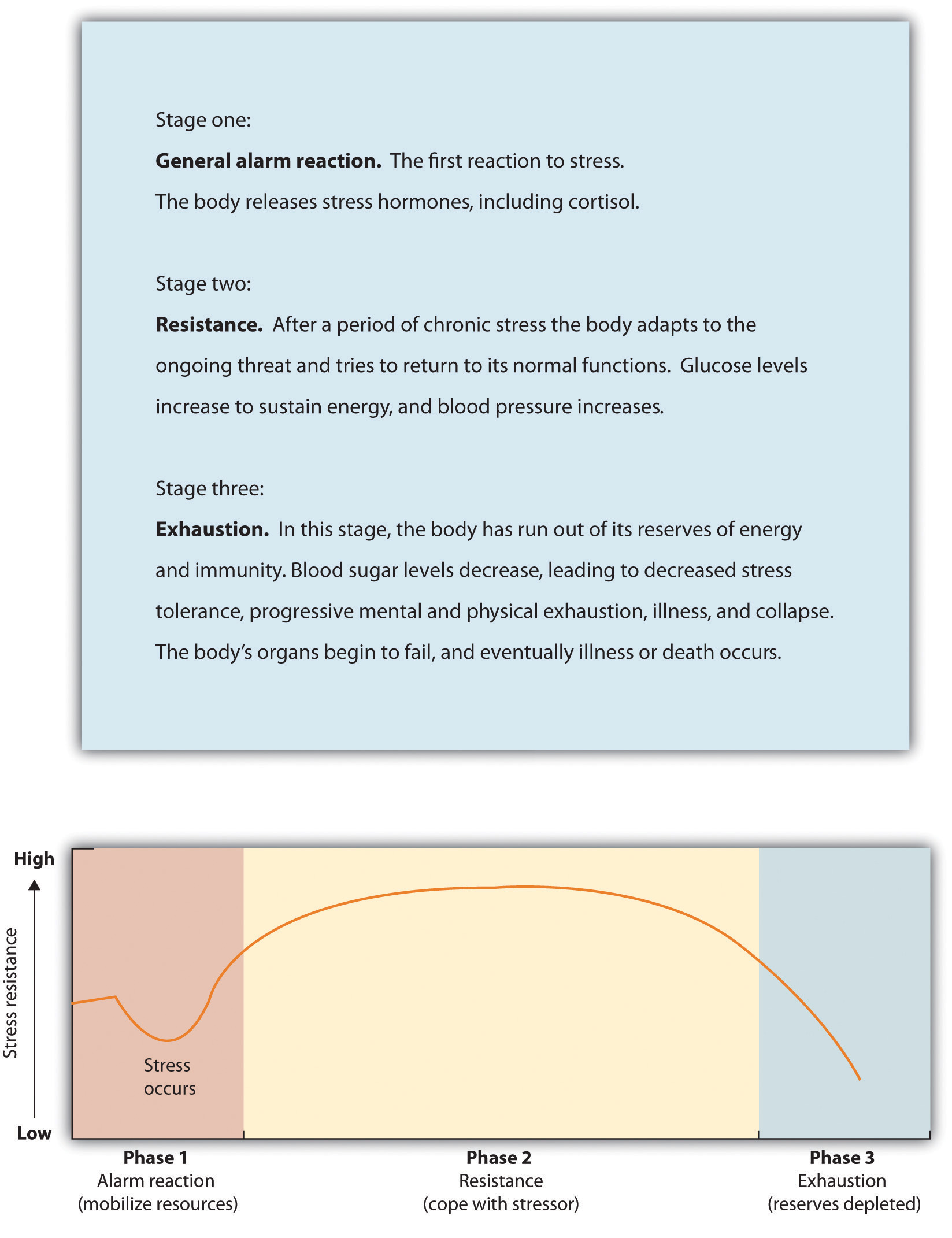



Emotions And Motivations




7 Emotional Intelligence Quotes And Do They Ring True




Expressed Emotion Chapter 12 Lecture 3 Like Most
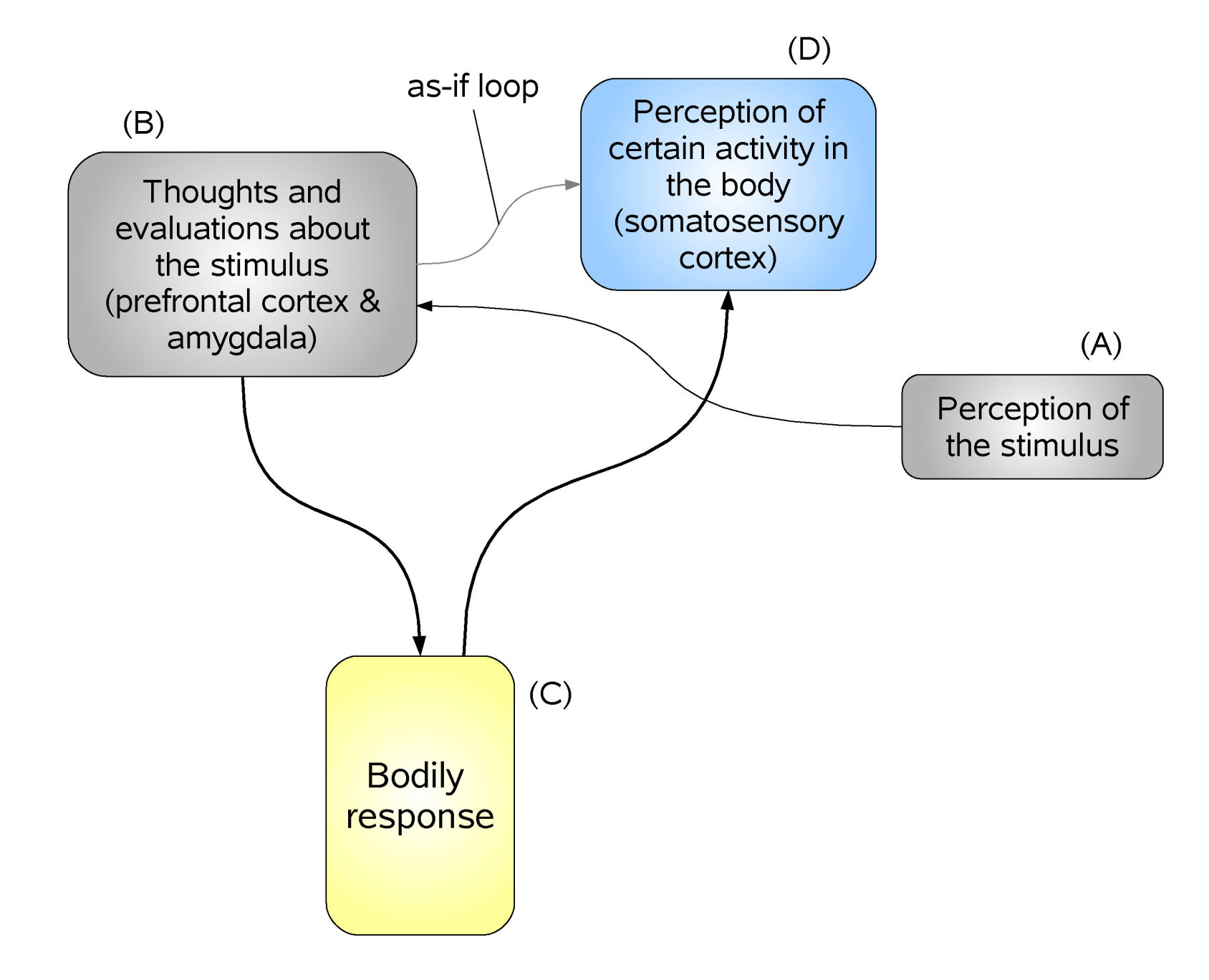



Emotion Theories Of Internet Encyclopedia Of Philosophy
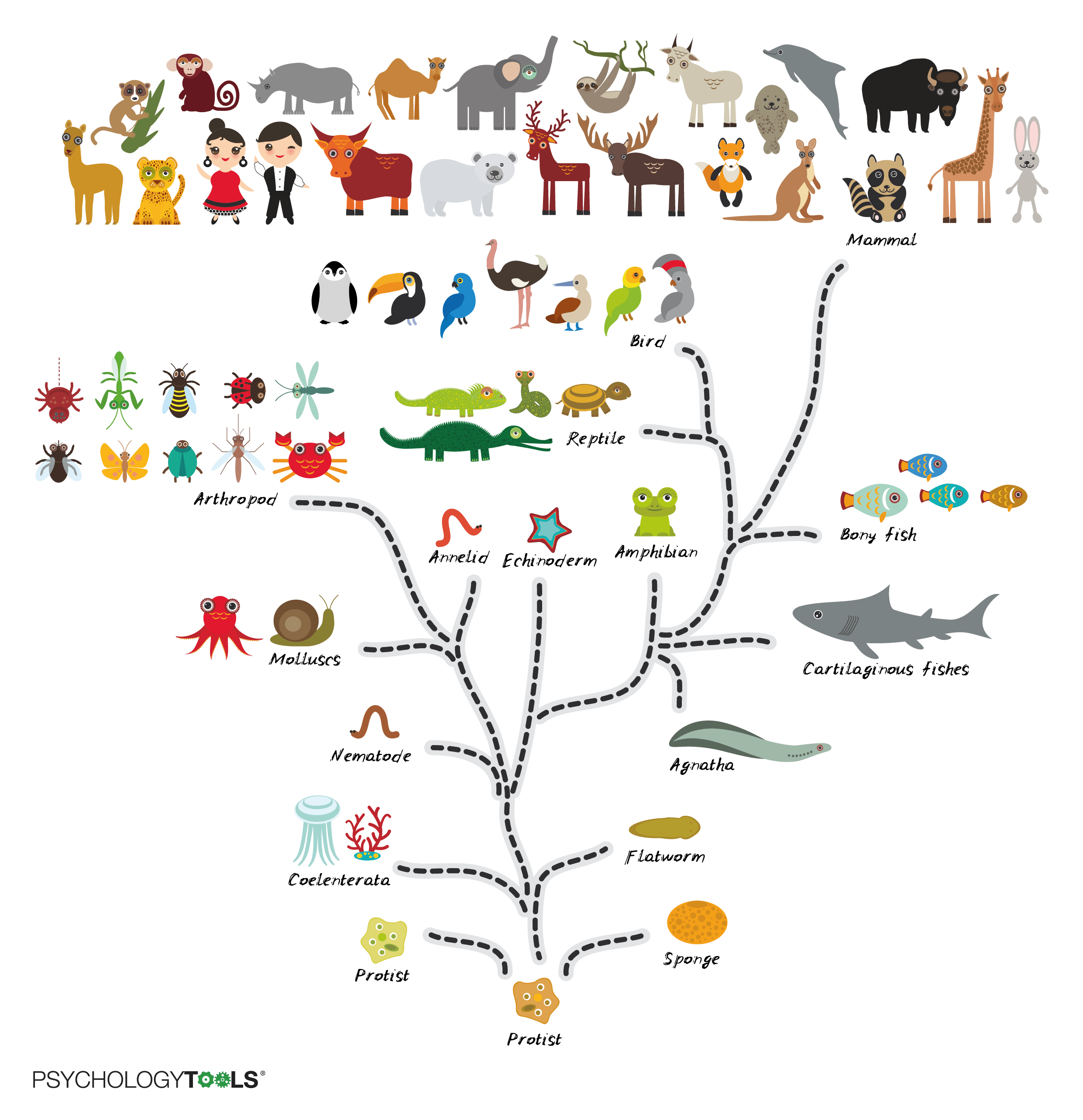



A Guide To Emotions Psychology Tools



11 1 The Experience Of Emotion Introduction To Psychology 1st Canadian Edition




Pdf Factor Analysis Of The Level Of Expressed Emotion Scale A Questionnaire Intended To Measure Perceived Expressed Emotion




9 Emotional Regulation Tips For Anyone Who S Struggling Right Now Self




Functions Of Emotions Noba



Psychology 8th Edition David Myers Ppt Download




Resourcd File




Pdf Does The Level Of Expressed Emotion Lee Questionnaire Have The Same Factor Structure For Adolescents As It Has For Adults Quinten Raaijmakers Academia Edu




Emotion Introduction To Psychology




Alexithymia When You Have No Words To Describe How You Re Feeling
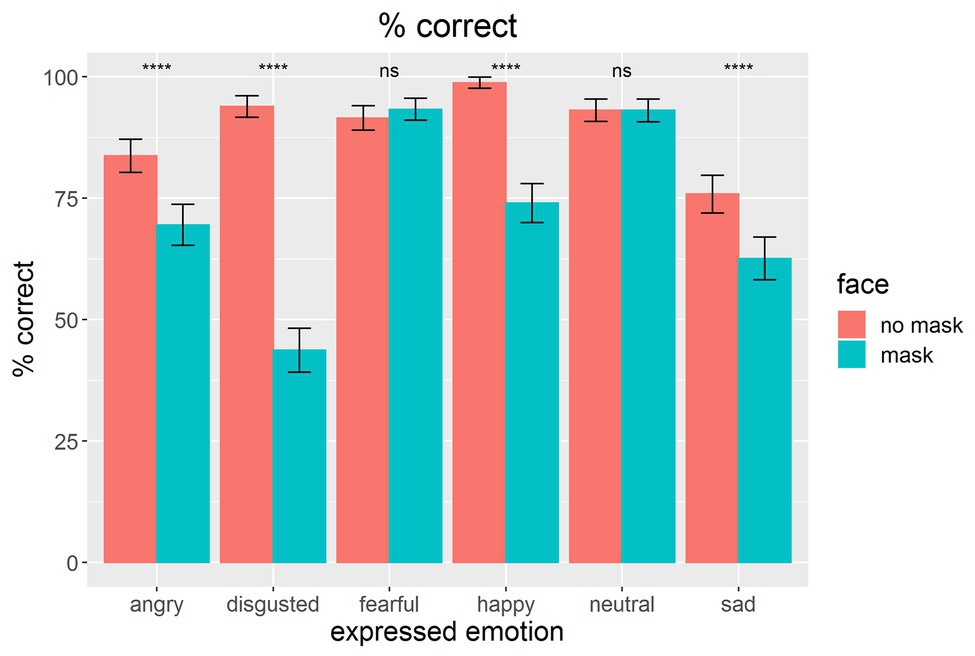



Frontiers Wearing Face Masks Strongly Confuses Counterparts In Reading Emotions Psychology




7 Emotion In Organizations Academy Of Management Annals
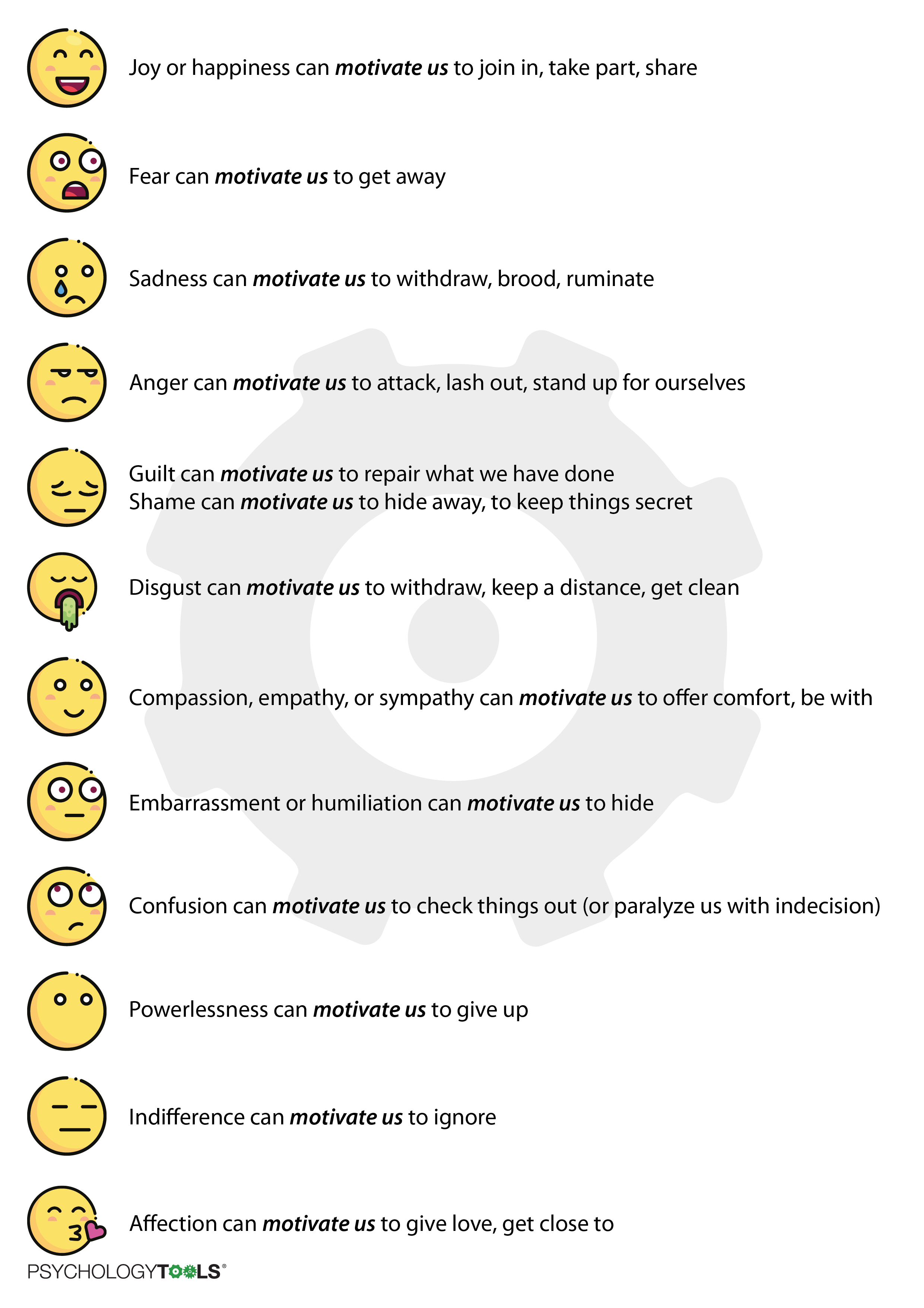



A Guide To Emotions Psychology Tools
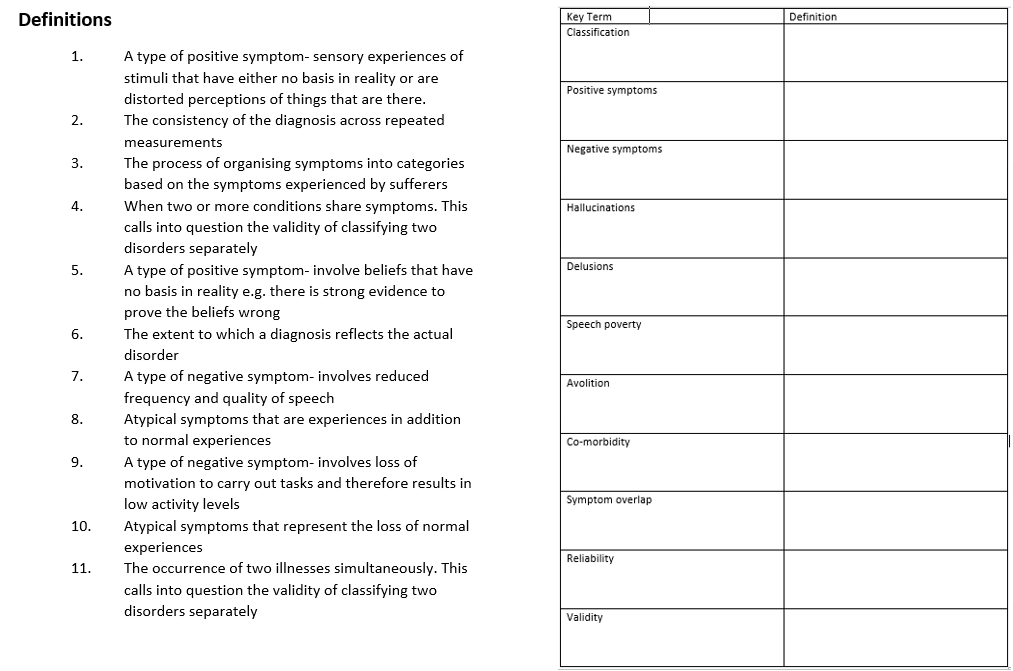



Schizophrenia Quiz Psychology Quiz




How Color Impacts Emotions And Behaviors




Level Of Expressed Emotion And Quality Of Life In Hiv Patients Penwell Mutize Livres Specialises Africa Vivre




3 Ways To Better Understand Your Emotions
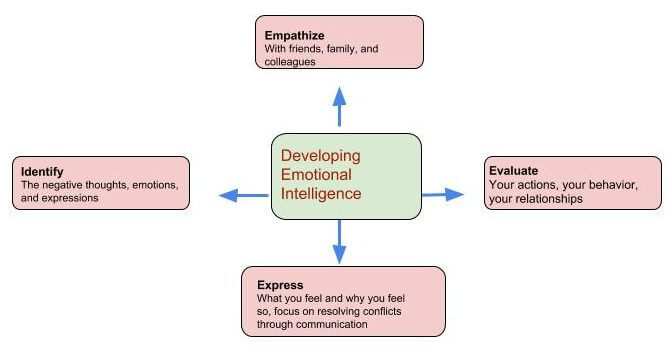



How To Improve Emotional Intelligence Through Training
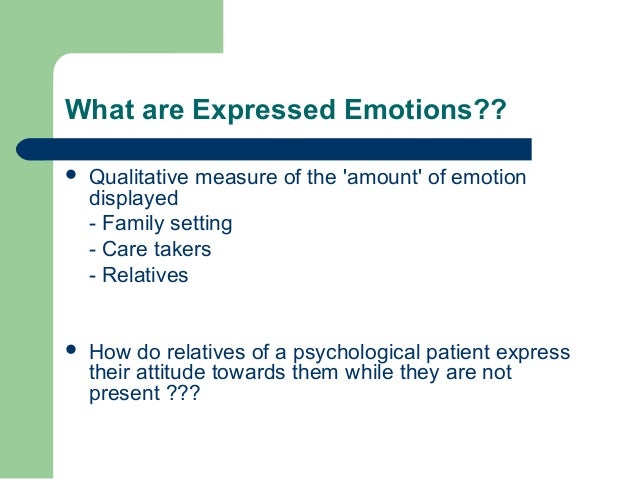



Expressed Emotions
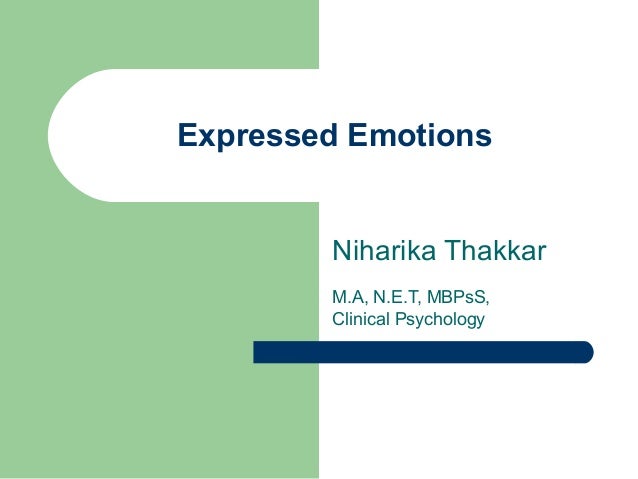



Expressed Emotions




Facial Expressions Of Emotion Are Not Culturally Universal Pnas
.jpg?ezimgfmt=rs:0x0/rscb26/ng:webp/ngcb26)



Schizophrenia Diagnosis And Treatment Simply Psychology




Do Expressed Emotions Result In Stigma A Potentially Modifiable Factor In Persons With Epilepsy In India Epilepsy Behavior
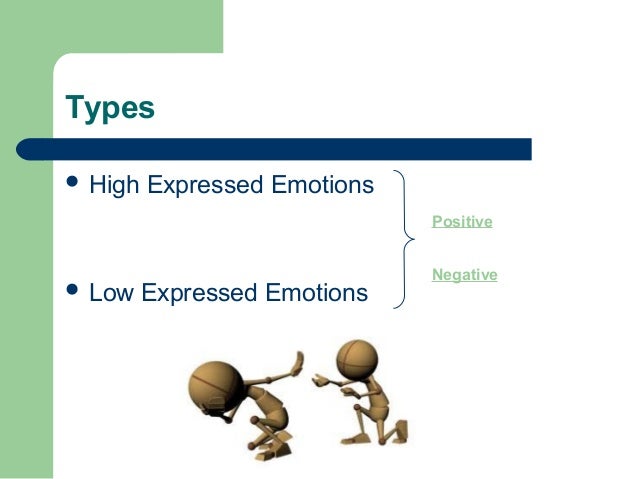



Expressed Emotions
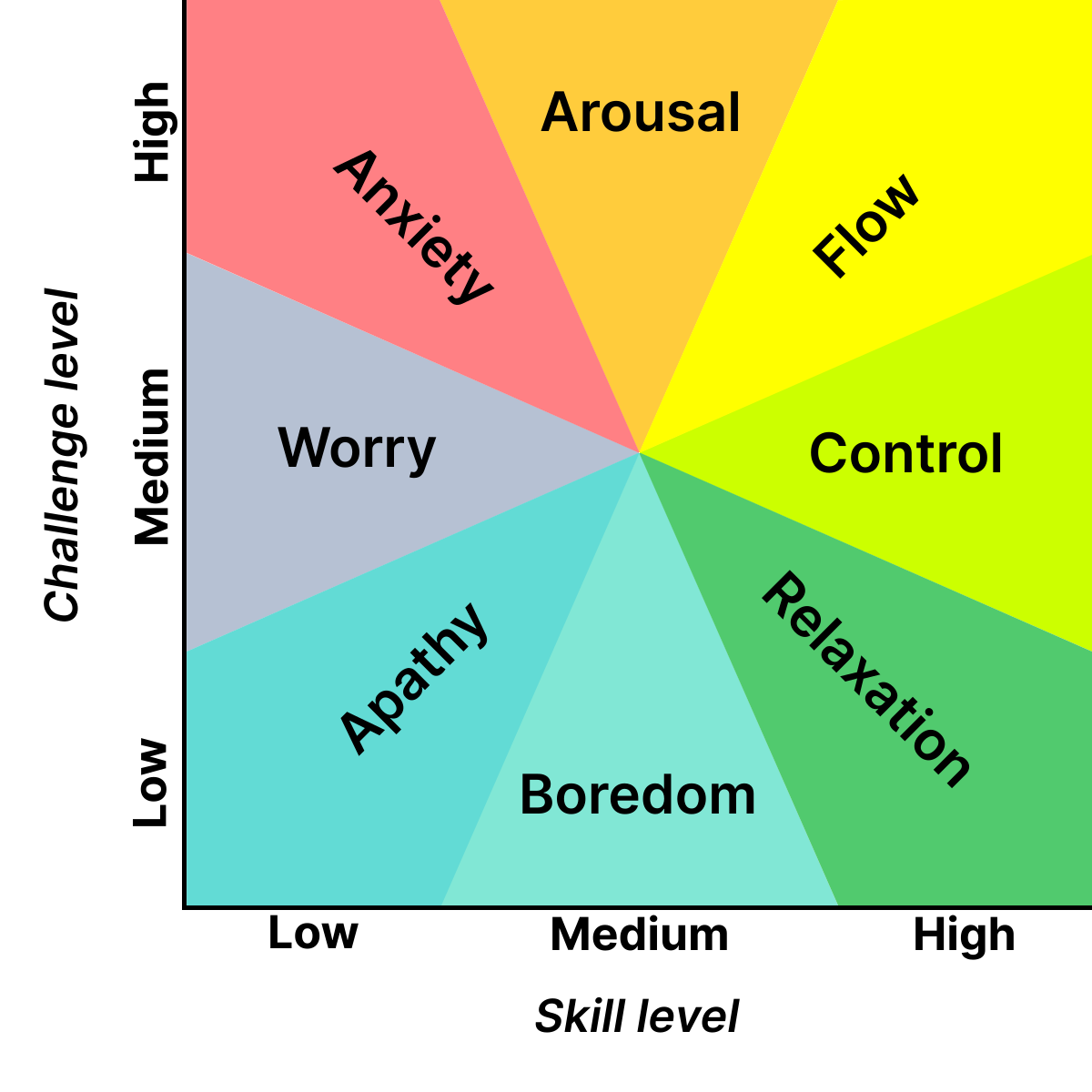



Apathy Wikipedia




Flat Affect Symptoms Conditions And Treatment




Attachment Mentalisation And Expressed Emotion In Carers Of People With Long Term Mental Health Difficulties Bmc Psychiatry Full Text




Our Basic Emotions Infographic List Of Human Emotions Uwa Online



Emotion Stanford Encyclopedia Of Philosophy




The Role Of Family Dysfunction In Schizophrenia A Level Psychology Ao1 Revision Youtube




Experiencing And Expressing Emotion University Of Illinois Counseling Center
/GettyImages-1095312442-4bc95ba7ddd643aa9e322f9eabc18b62.jpg)



The Universal Expression Of Our Emotions




Frontiers The Influences Of Emotion On Learning And Memory Psychology




Emotion Wikipedia
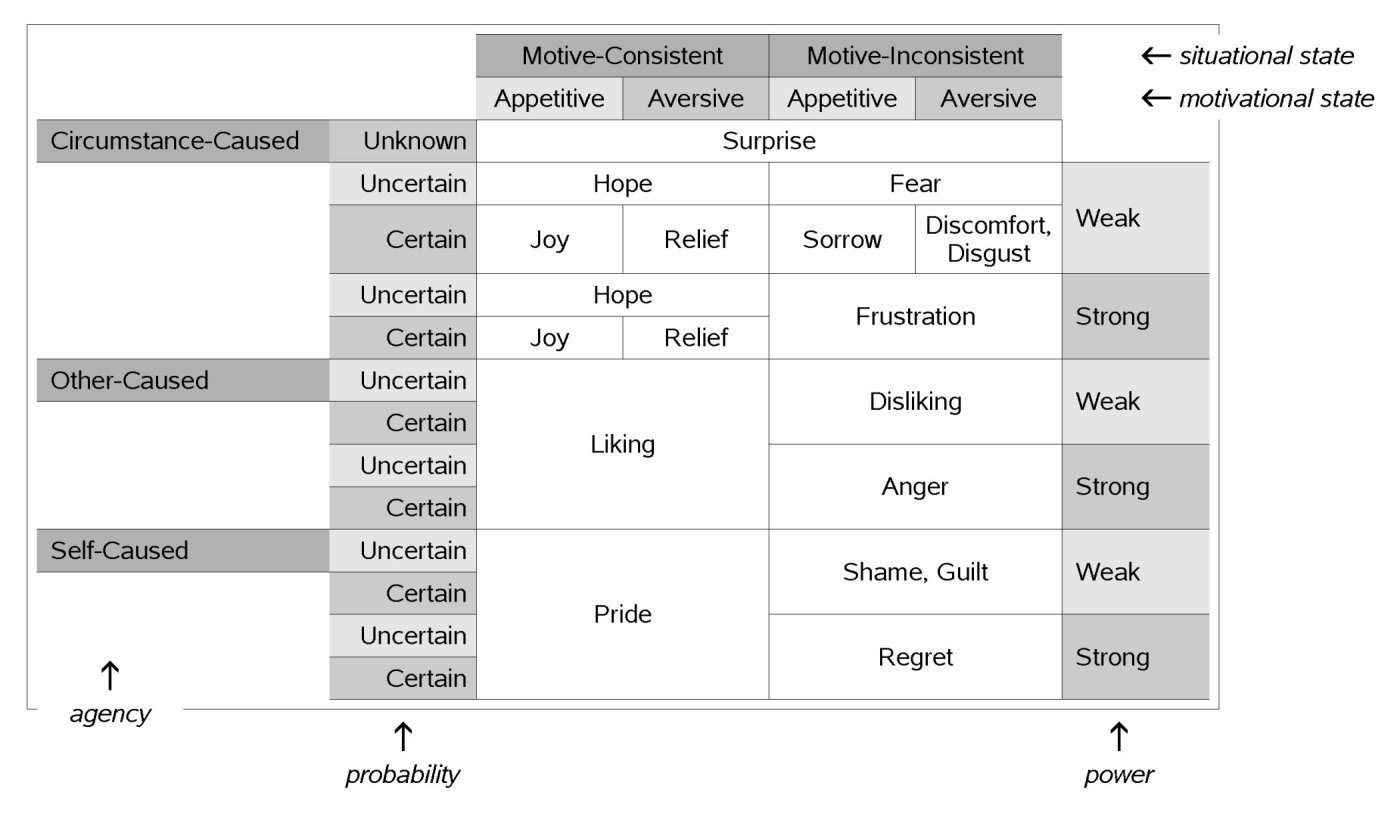



Emotion Theories Of Internet Encyclopedia Of Philosophy



コメント
コメントを投稿